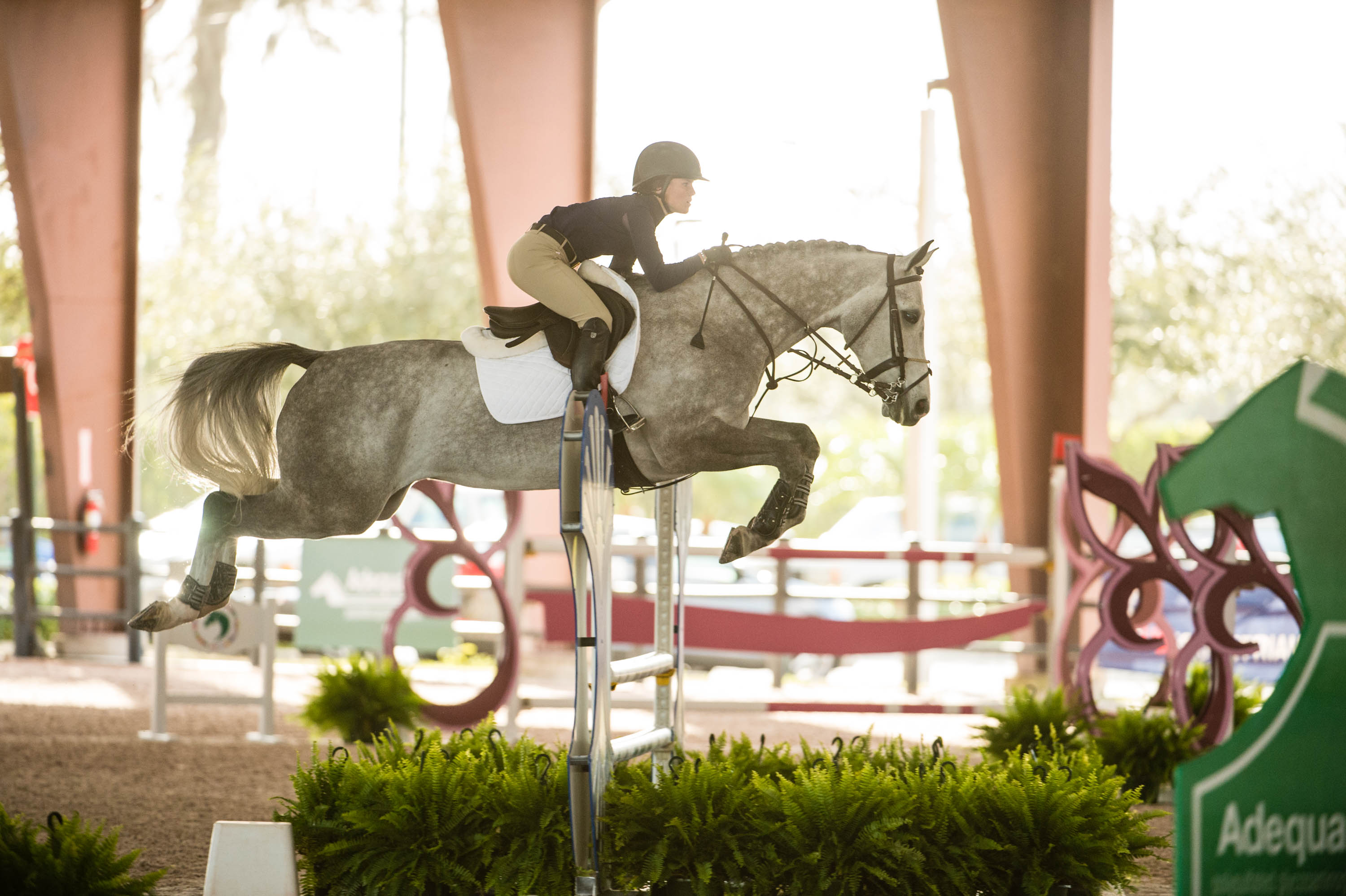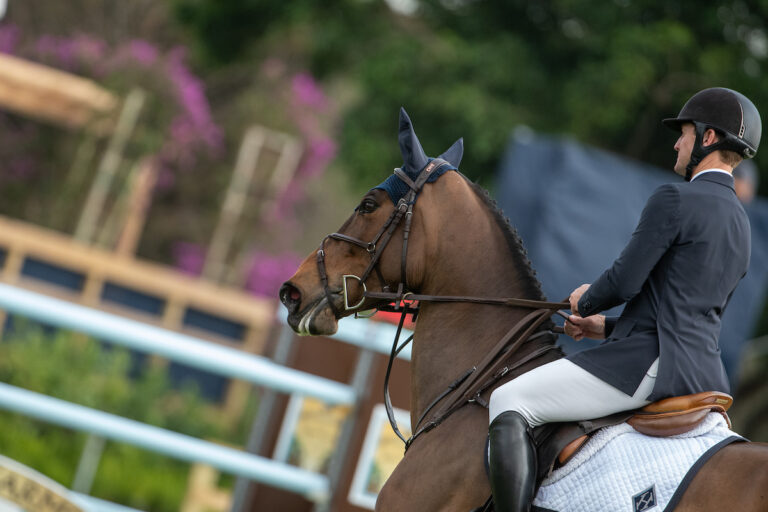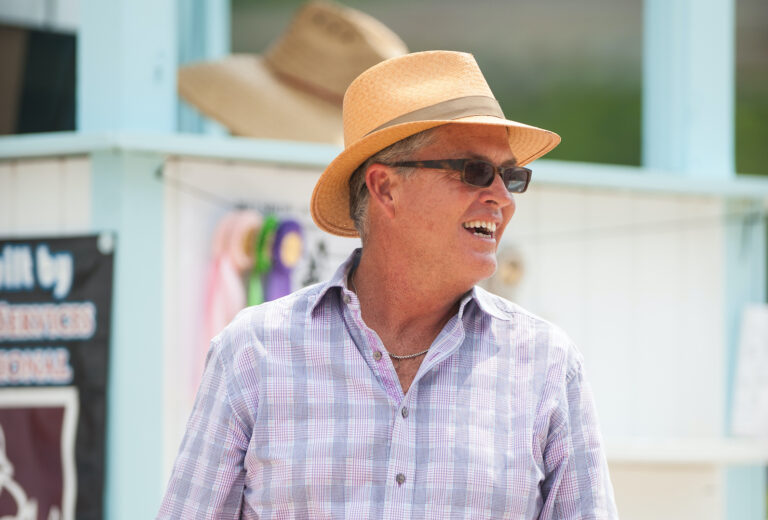
As George Morris once said, “It’s not riding, it’s horsemanship.” This sentiment was on display throughout the 2018 George H. Morris Horsemastership Training Session, an intensive three-day program for young riders that I attended this January. Throughout the week we learned all aspects of horse care, from proper grooming and blanketing to taking a horse’s temperature and pulse. These skills are the building blocks of the relationship between horse and rider that make one successful in the ring.
In addition to our mounted sessions, we had classes on veterinary care, sport psychology and several other topics designed to make us the best horsepeople we could be. For example, Janus Marquis, the U.S. show jumping team’s equine physiotherapist, taught us how important it is to understand the anatomy of your horse when taking care of him and talking to your veterinarian.
Starting each day at 5:15 a.m., I was greeted by my 8-year-old Belgian Warmblood, Express Blue GP Du Bois Madame (a.k.a. “Blue”), as I walked into the barn. This quiet moment with him every morning helped me calm my nerves and focus on what was to come. This year’s instructors were some of the best riders in the world: Anne Kursinski, Kent Farrington, McLain Ward and Beezie Madden. Suffice it to say, I had a couple fan-girl moments while being taught by riders I had idolized since I was a little girl. Luckily, the first session was on the flat with Anne. As a former student of hers, I felt like I knew what to expect. She emphasized the connection with the horse’s mouth. In order to maintain a direct line from it through to the elbows, she shortened each rider’s reins by tying a knot in them. This ensured that our hands maintained even pressure on the horse’s mouth. At one point, she also took away everyone’s stirrups to strengthen our seats. Both of these exercises attuned you to the horse, re-emphasizing how you are a partner, not a passive participant.
The next session was with the world’s current No.1 show jumper, Kent Farrington, which was simultaneously exhilarating and terrifying. Even as I put Anne’s techniques to use, I entered the ring with butterflies in my stomach. Kent’s laid-back attitude immediately put everyone at ease. The amount of information he imparted to us almost put me on overload. He uses a variety of gymnastic exercises to work on rideability. After each course, he made us turn into the arena fence to keep our horses engaged and prevent them from anticipating the turn. He also emphasized how bringing horses back to these basics helps hone and improve them in the show ring.
By the final day I was no longer nervous—just in time for the Nations Cup-style jumping rounds, in which we were divided into teams, each with a top rider as a chef d’équipe, or coach. This was the moment when all the lessons came together. As second to go, with little opportunity to watch how the course rode, I was determined to set a good tone for my team. My chef d’équipe, Beezie, guided me through a great warm-up on Blue, so I felt prepared when I entered the ring. Even so, I was nervous looking at the jumps as I walked in. There were several large walls, hedges and a water jump that I was unsure how Blue would react to. Since he is partially blind, he can be very spooky at times. Thankfully, all the skills we’d worked on throughout the clinic helped us produce a clear round. With positive feedback from McLain Ward, I felt like I was on cloud nine.
As the final day came to a close, I was exhausted. This experience had been a whirlwind with many long days and lots of hard work. The overarching theme had been the connection with the horse both on the ground and in riding. My relationship with Blue had strengthened throughout the week. Being able to give him all of my attention and work on fundamental skills allowed us to get more in sync and learn to anticipate each other’s moves. The clinic had taught me not only valuable riding skills, but also valuable skills for being a horsewoman. I am extremely grateful for the sponsors and clinicians who dedicated the time and resources for this clinic, helping to advance the next generation of riders.
This article was originally published in the June 2018 issue of Practical Horseman.










